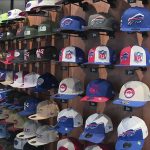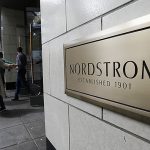More consumers are realizing that technical features in socks equal happy feet. As gas prices continue to rise, and health-conscious lifestyles become increasingly popular, people are using their biped appendages in a variety of applications, and are demanding sustainable fibers that perform and endure.
Luckily, supplying consumers with high-quality, performance socks equates to booming retail sales, which, according to industry sources, grew more than 5 percent, topping $5 billion last year. And the trend is expected to continue.
According to Sally Kay, president and CEO of the Hosiery Association, “We have seen socks sales increase for the past several years. On performance socks specifically, were seeing people buying socks with technical features that ultimately enhance their performance.”
Such technical features include seamless toes, ventilation panels, extra cushioning in impact zones, and anti-microbial properties. Above all, consumers are interested in sustainable, high-quality materials.
As Roland Beliveau of Darn Tough Vermont notes, this bodes well for domestic manufacturers. “Well-made products are synonymous with being made in the U.S.A., and modern consumers are demanding more of them,” he says.
Chris Lussier, Bridgedales North American sales manager, concurs. “The bar has been raised in socks,” he says. “Consumers expect sustainable, renewable and environmentally friendly products that last. Consumers have also asked for anti-microbial yarns that dont contain silver or other minerals because of concerns that these will wash out of the socks and back into the environment.”
Kay, who is also witnessing a notable rise in interest in environmentally friendly products, says, “One of the newer things that were seeing is the sustainability movement, which has touched nearly everything.” However, she also suggests that this interest goes hand-in-hand with performance and “heightened functionality,” and notes that consumers are interested in socks that reduce odor and are breathable and supportive.
To deliver these qualities, many established companies-and a plethora of new vendors, including Goodhew-are blending synthetic yarns with natural fibers for a more diverse selection of sock options. Explains Goodhew partner Jim Markley, “Consumers are looking for socks that not only perform using natural fibers, but they also want socks that look good.”
Of course, good looks can mean many different things to consumers, which is why socks for Spring 2009 will offer a diversity of colors, patterns and styles, as well as a return to more sport-specific designs.
“Another popular trend were seeing is niches-socks designed specifically for [particular] end-uses, with a focus on the performance market,” Kay says, adding that such activities include walking, running, cycling, snowboarding and even fencing. “Basically, what were seeing is that if the product connects with consumers and delivers consistently, then the consumer will pay more and develop more brand loyalty-particularly in the sport-specific sock area.”









